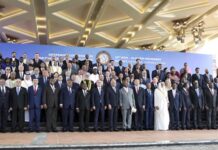Indian media reported recently that the Indian and Chinese military forces have “exchanged greetings and candies” at the border region including some “friction points,” and although there has been no official confirmation or relevant information released by the Chinese side yet, Chinese experts said that such activities are traditional at the border and the Indian decision-makers intend to show goodwill to ease border tensions with China in 2022.
But this positive message will not solve all the problems both sides have nor help them to reach agreement immediately due to the complexity of the issue and the impact from extreme anti-China forces in India, as well as third parties like the US, so it is unrealistic to be too optimistic over China-India ties in the new year, analysts said.
On the occasion of New Year 2022, the Indian Army and the People’s Liberation Army (PLA) of China “exchanged greetings and sweets” along the Line of Actual Control (LAC) on Saturday, including at the “friction points in eastern Ladakh,” ahead of the 14th round of corps commander-level talks later this month in yet another bid to defuse the 20-month-long military confrontation, the Times of India reported on Sunday.
“Local commanders are maintaining their regular and customary interactions with their counterparts from the PLA. It serves to keep the tensions down along the frontier, while higher-level diplomatic and military talks take place to resolve outstanding issues,” a senior Army officer said, according to the Indian media.
During Indian or Chinese festivals, it has been a customary for both sides to show goodwill to each other, Lin Minwang, a professor at the Institute of International Studies of Fudan University told the Global Times on Monday.
“The China-India relationship at the border area is like a neighborhood to some extent. Neighbors may have friction or even fight with each other occasionally, but they would like to be polite and return to a peaceful coexistence after the fight,” Lin said.
Due to the tough and complex environment and weather at the China-India border regions, both sides might need assistance and cooperation from each other from time to time in difficult situations, such as to find and rescue missing military personnel, civilians or animals, said analysts.
Usually after a minor conflict, officers in charge from the two sides would gather at 8:30 am next morning and drink some tea, Lin said. “It is believed that such activity reported by Indian media is basically a message from India’s top officials to ease tension and keep communications open with China.”
There are many problems that cannot or do not need to be solved by fighting, Lin noted, saying that “the tensions in recent years are actually unusual throughout the history of China-India ties, so this could reflect an intention of Indian high authorities to improve the atmosphere at the border.”
The act of “exchanging sweets” reported by the Indian media is meaningful, but it does not mean the two sides will easily reach agreement very soon or make a major change on their principles about the border issue, Lin noted.
On Saturday, a video released by Chinese state media showed PLA troops unfurling a Chinese national flag at Galwan Valley. Troops sang the national anthem and wished all Chinese people a happy New Year, pledging to the people they will guard the border for the motherland. The video has gone viral on Chinese social media.
After seeing the video, Rahul Gandhi, a member of major opposition party the Indian National Congress and member of the Indian Parliament, urged Indian Prime Minister Narendra Modi “to break the silence” to China, as he wants the Indian government to be tougher on the matter, according to Gandhi’s Twitter account on Sunday.
Experts said although the Modi government might want to handle the issue pragmatically, parties like extreme anti-China forces in India, the US, or India’s opposition parties who want to create more troubles for the ruling Bharatiya Janata Party would not like to see a recovery of China-India ties. They will continue to play troublemakers, so new tension caused by provocations or accidents is likely to reemerge in 2022.
In order to ease tension and realize recovery of bilateral ties, and avoid any further conflict that could cause unnecessary casualties, both Beijing and New Delhi need greater wisdom and determination to better manage the issue in 2022, said analysts.
Global Times.





